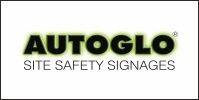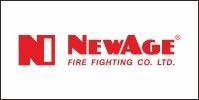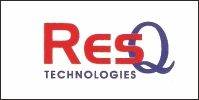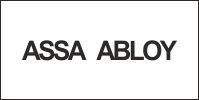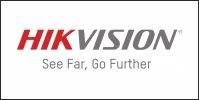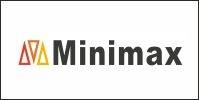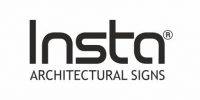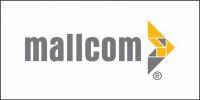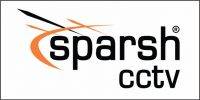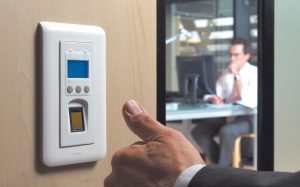The security landscape continues to evolve in new and complex ways, an evolution that brings change on many levels. Rather than seeing this change as an interruption or distraction, a proactive approach and a solid plan can turn it into an opportunity for significant improvement.
While migrating from old to new systems is always a big undertaking, new technology in today's physical access industry makes it relatively affordable and manageable. Organisations have the opportunity to move from 20-year-old physical access control systems (PACS) to significantly more secure, contactless technology, while paving the way for future mobile platforms that further improve security and convenience.
Making the right decisions today will also ensure that a company's access control solution can be used for far more than just opening doors. Modern systems will support a wide range of high-value applications, ranging from cashless vending, time and attendance and secure print management, to secure network logon. The access control solution will act as part of a fully interoperable, multi-layered security solution across systems, hardware, and building topography.
There are many compelling reasons to take the leap. These include upgrading from the inadequate security of magstripe and proximity cards, as well as enhancing user convenience with a platform that supports multiple applications on smart cards or mobile phones.
ROI will be realised through improved security operations and more efficient workflows, or through reduced insurance premiums due to better risk management.
Legacy security solutions often use proprietary technology that is static, which makes them easy targets for attack, and precludes their evolution beyond current abilities and security levels. Instead, organisations should pursue solutions that are dynamic and adaptable to the changing needs of their environment, and the best practices in the relevant industry.
Interoperability is one of the first considerations for a major access control solution upgrade. Building an architecture that supports change requires careful attention to the connections between various components of the architecture. As components evolve and add new equipment and systems, security, administration and facility managers need to understand all of the communication dependencies of their architecture, and how the latest standards might be applied.
Additionally, interoperability should deliver economic benefits. An important litmus test for interoperability is the cost associated with switching out the various components of the architecture. Stepping through the “what if” scenarios of component replacement is a useful exercise to understand dependencies and links, and all of the material and labour costs associated with moving on from an existing device or platform.
In the end, interoperability has been achieved when a facility can easily and inexpensively expand and upgrade their systems to meet changing needs and take advantage of new technologies.
The latest solutions ensure that security is independent of hardware and media, making it much easier for facilities to evolve their infrastructure to support tomorrow's needs. Modern solutions also enable smart cards to be portable to smartphones so that a facility will have the option to use smart cards, mobile devices, or both within their PACS.
There are many possible entry points from which to begin a migration process. Mergers often involve rebranding or combining disparate systems, technologies and processes. As the cost of new technology is generally competitive with that of the legacy system, this would be a perfect time to migrate to a more secure, sophisticated and capable system.
Facility consolidation or moving to new locations often means that new credentials will have to be issued. This offers a good opportunity to standardise all technology onto one system.
Since new technology offers the ability to issue or change credentials remotely, it is now possible to integrate access control into one system that is centrally managed. Standardising all employees on one system can increase security and improve resource management.
Organisations that want to add new applications, such as time and attendance, secure print management, biometrics, cashless vending, and medical records management functions, will need to issue some type of associated card to users. They can use this as an opportunity to migrate to a contactless smart card that combines access control with these extra functions, enabling employees to carry a single card for many purposes. Administration of these functions is centralised into one efficient and cost-effective system.
Migrating to a new system can dramatically improve security for a facility, which may help with insurance requirements or improve risk-management costs by reducing liabilities.
An organisation may also be required to increase security as the result of new legislation or regulatory requirements. In some cases, where very high security is required, a facility may even need to add an additional, high-tech authentication factor – such as biometrics – to their upgraded solution.
The reality is that sometimes it takes an unexpected event or security breach to move an organisation to make the investment in a new access control system. Ideally, a facility should migrate before there is a problem, especially when the current system uses legacy technology that is known to be easily cloned.
Today's access control platforms allow a secure, phased migration, from old to new systems. Depending on the size of the population, it can take several days or several weeks to migrate. If necessary, a parallel system can be in place for months.
The important thing is to ensure interoperability with legacy and future systems. This also requires that the access control platform includes multi-technology cards and readers that can be used to bridge the gap between just about any legacy system and today's secure contactless technology.
One approach for getting started is to simply use multi-technology cards within the one system. A single smart card can securely house up to four different access control technologies, including Wiegand, magstripe, low frequency, high frequency, or a contact chip. This approach works well if an organisation only wants to upgrade security for a specific department or group of professionals. The new cards can contain both technologies so employees can enter any location regardless of whether it has an old or new reader.
Another way to handle migration is to install readers that use a combination of old, low frequency and new, high frequency technologies, including 125 kHz HID Prox® or magstripe, as well as the latest RFID technology. These multi-technology readers increase flexibility, enabling the facility to develop a migration plan that serves its unique requirements.
Then, rather than switching out all of the cards at once, high frequency cards can be issued to new employees and as replacements with existing employees. This will offset the cost of swapping out all of the cards at once. The organisation can then replace all of its low frequency cards with high frequency cards after a transition period, and by then the cost impact will be lower because many of the employees will have the new cards already.
Ultimately, migrating to a new access control system should be seen as an opportunity rather than an interruption. With the right approach and a bit of planning, organisations can dramatically improve their security while making life easier and more convenient for employees.













